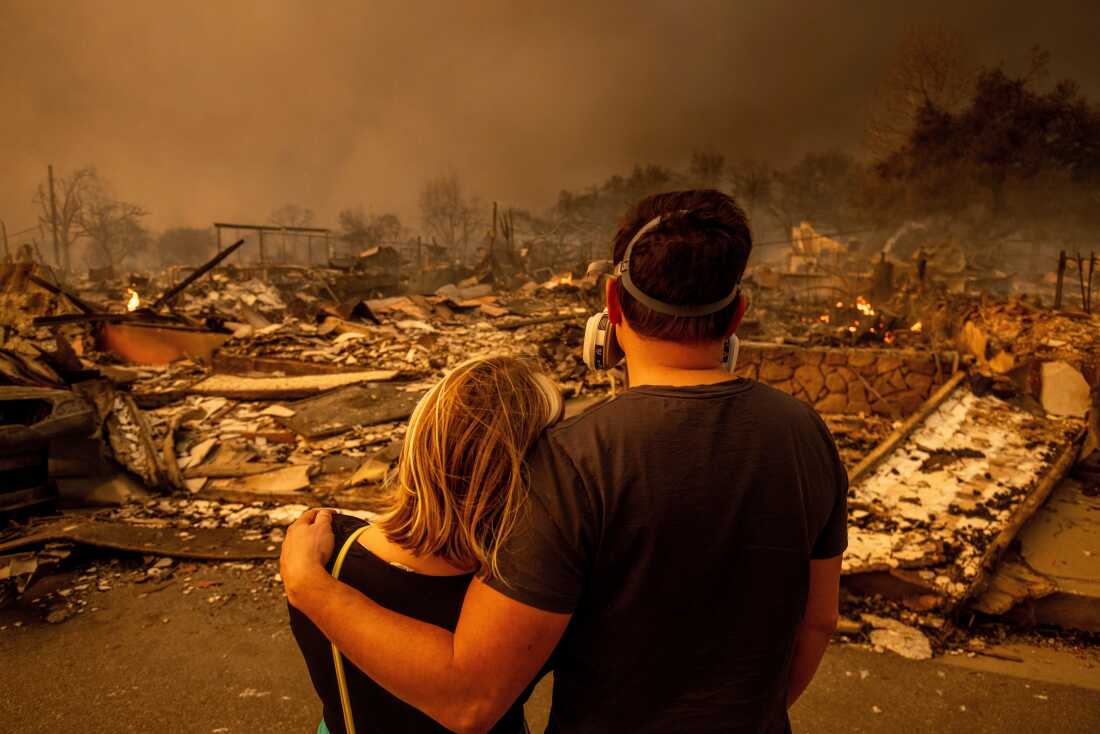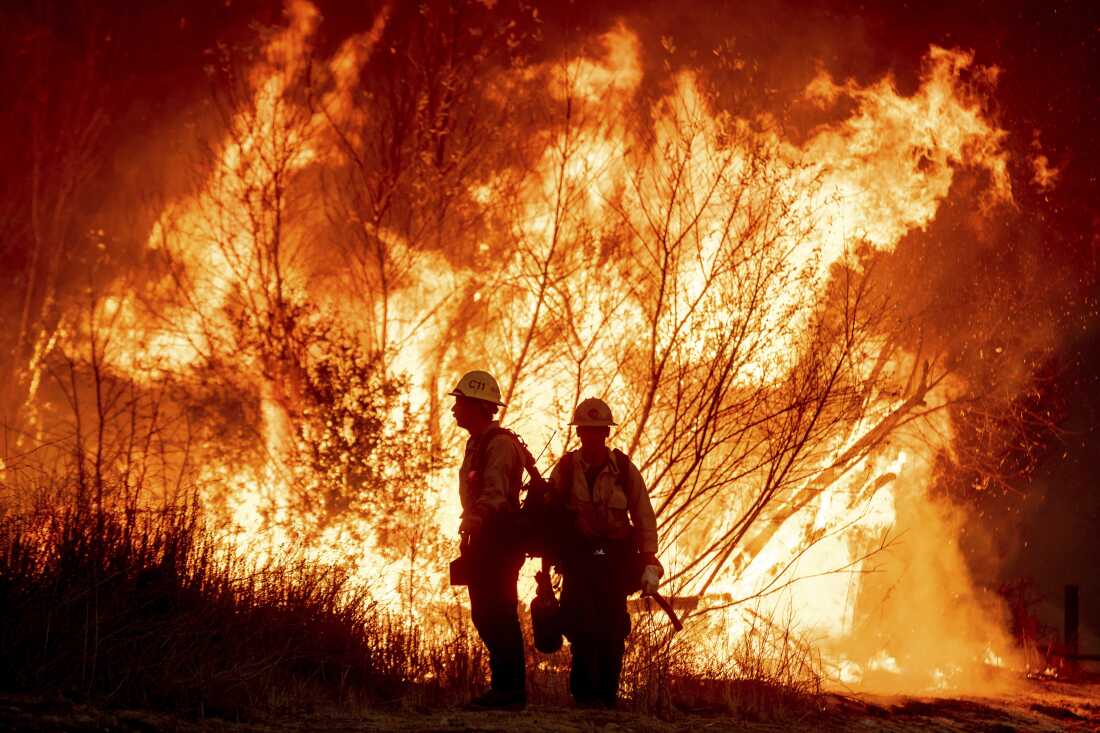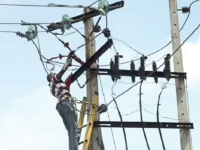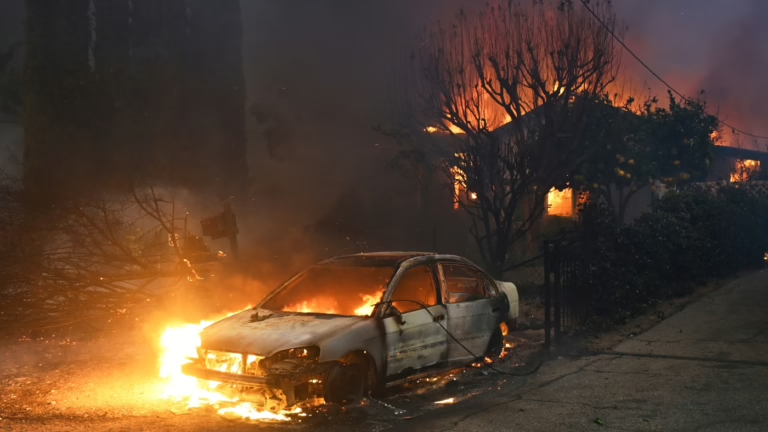FILE – The Eaton Fire engulfs vehicles and buildings on Wednesday, January 8, 2025, in Altadena, California.
Nic Coury/AP
hide caption
toggle caption
Nic Coury/AP
LOS ANGELES – An external evaluation has revealed that outdated emergency alert protocols and insufficient resources significantly delayed evacuation notifications as wildfires rapidly engulfed communities in the Los Angeles region this past January.
Commissioned by Los Angeles County supervisors shortly after the devastating Eaton and Palisades fires-which claimed over 30 lives and razed thousands of homes in Pacific Palisades and Altadena-the Independent After-Action Report was prepared by the McChrystal Group consulting firm.
The report, published Thursday, highlights multiple systemic shortcomings, including antiquated policies, inconsistent operational procedures, and communication gaps that collectively hindered the county’s emergency response efforts.
Through interviews with survivors and a detailed analysis by the Associated Press, it was found that evacuation directives for certain Altadena neighborhoods affected by the Eaton Fire were issued only after homes had already been destroyed. Similar delays were noted during the Palisades Fire, where evacuation coordination was initially managed by the Los Angeles Police Department. These findings expose critical flaws in the county’s alert infrastructure.
Personnel and Communication Challenges
The report points to severe staffing deficits, including numerous vacancies among sheriff’s deputies and an underfunded Office of Emergency Management (OEM). Additionally, first responders and incident commanders struggled to maintain consistent communication due to unreliable cellular networks, fragmented reporting methods, and the use of disparate, unlinked communication platforms.

“Despite the courageous and swift actions of frontline personnel under extreme conditions, these events revealed the urgent need for clearer guidelines, enhanced training, integrated technological tools, and better public communication,” the report states.
County officials emphasized that the report’s purpose is not to assign blame but to identify lessons that can improve safety and rebuild public confidence.
“This is about learning from experience, enhancing safety measures, and regaining the trust of our communities,” said Supervisor Kathryn Barger, representing Altadena.
Preparations for anticipated strong winds began on January 3, four days before the fires erupted. However, a key experienced OEM staff member was away for training, leaving less seasoned personnel in critical roles during the crisis, the report notes.
Moreover, the county had recently expanded its contract with emergency alert provider Genasys in November, introducing new notification software. At the time of the fires, only four staff members were trained to operate this system.

FILE – Megan Mantia and her boyfriend Thomas return to her home damaged by the Eaton Fire on January 8, 2025, in Altadena, California.
Ethan Swope/AP
hide caption
toggle caption
Ethan Swope/AP
The report also highlights that the evacuation alert process was slow and complicated, involving multiple layers of county leadership. For example, during the Palisades Fire, the Fire and Sheriff’s Departments identified evacuation zones, which were then relayed to an OEM staff member at the Incident Command center. This individual contacted another OEM employee at the Emergency Operations Center, who updated the alert system and sent notifications to the public.
Public Notification System
This multi-step communication took between 20 and 30 minutes during the January fires, an improvement over the previous system that required 30 to 60 minutes to notify residents, according to the report.
However, many of the county’s alert mechanisms depend on residents opting in to receive notifications.

Some evacuation alerts required recipients to click additional links for full details, which complicated the messaging. The alert system did not provide comprehensive updates on the fire’s progression. Furthermore, power outages and cellular network disruptions impeded timely evacuation notifications, while the fire’s rapid spread outpaced communication efforts.
Prior to the fires, the county issued limited warnings about the anticipated Santa Ana winds and amplified National Weather Service advisories via social media and press releases, but did not issue dedicated preparedness campaigns.
Evacuation Obstacles
During the Eaton Fire, some sheriff’s vehicles were engaged in evacuations in the Palisades when the fire erupted in Altadena. These units, along with search and rescue teams and personnel from a downtown Los Angeles jail, were redeployed to assist with evacuations in the affected neighborhoods.
Nevertheless, a shortage of vehicles hampered the sheriff’s department’s ability to respond effectively across all impacted areas.

“At-risk groups, particularly elderly residents who may not have been monitoring alerts due to technological barriers or mobility issues, experienced heightened dangers from delayed evacuation notices,” the report authors noted.
Positive Outcomes Amid Crisis
The report commends the bravery of first responders, including sheriff’s deputies and county firefighters, who evacuated nursing homes, guided public transit drivers through hazardous zones, and rescued individuals trapped in burning residences.

FILE – Firefighters combat the Kenneth Fire in Los Angeles’ West Hills neighborhood on January 9, 2025.
Ethan Swope/AP
hide caption
toggle caption
Ethan Swope/AP
“Their urgent and selfless actions saved lives but also added layers of complexity as they balanced immediate rescue efforts with maintaining overall operational control,” the report states.
The Los Angeles County Board of Supervisors is set to review the comprehensive 133-page report at their upcoming meeting next Tuesday.
Investigations into the origins of both fires remain ongoing.

Similar post-incident analyses have exposed alert system failures in other major wildfires across the U.S., including the 2017 Tubbs Fire in Santa Rosa, which claimed 22 lives; the 2018 Camp Fire in Paradise, responsible for 85 fatalities; the Woolsey Fire in Malibu, which killed three; Colorado’s 2021 Marshall Fire that destroyed over 1,000 homes near Denver; and Hawaii’s 2023 Lahaina Fire, which devastated the historic town and resulted in 102 deaths.
























